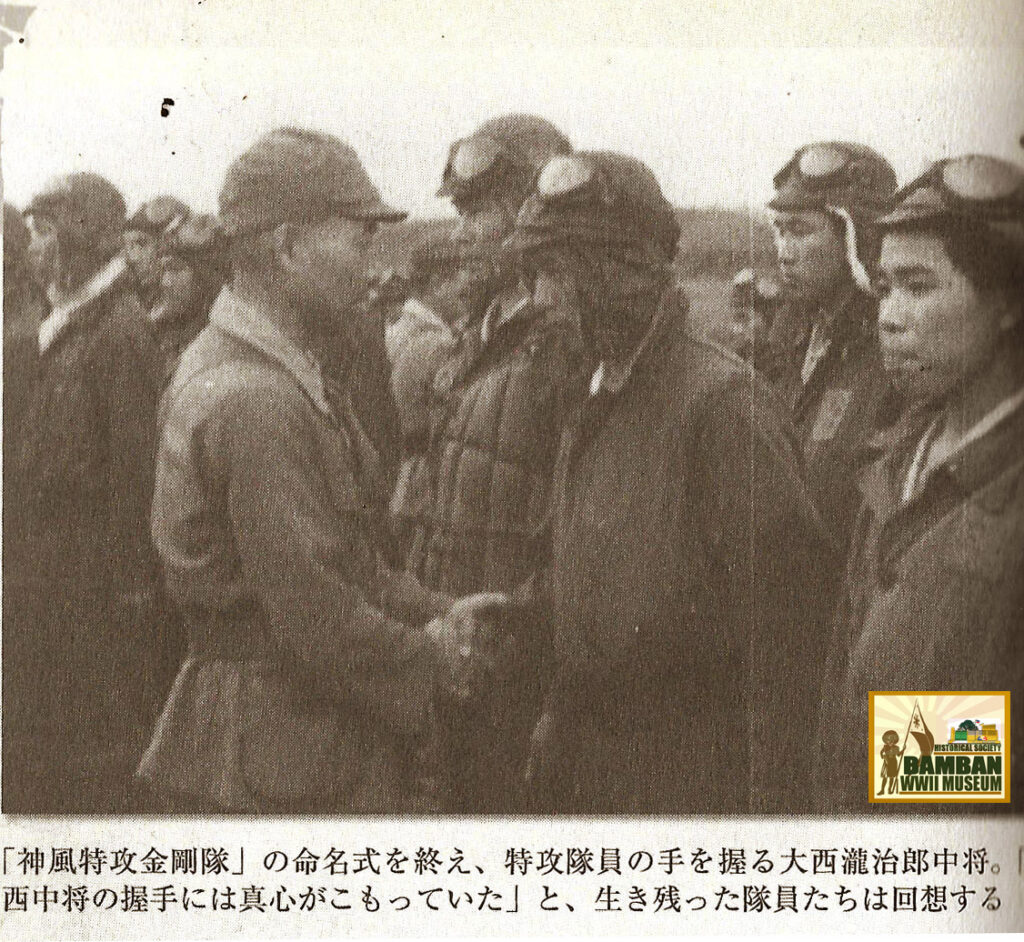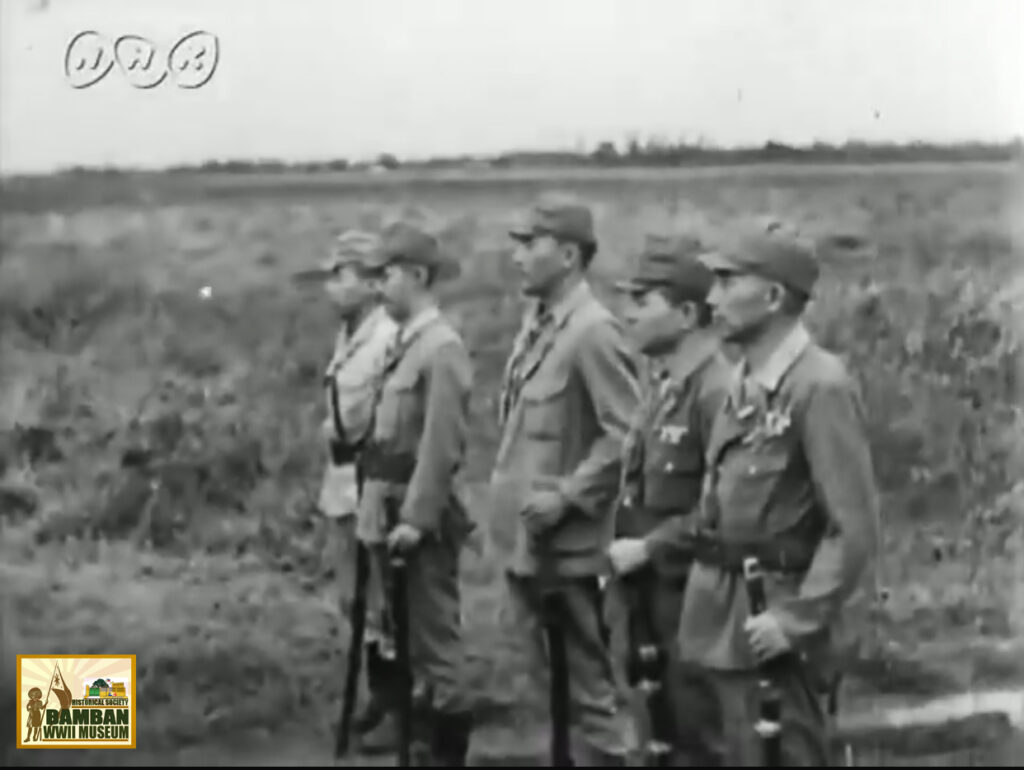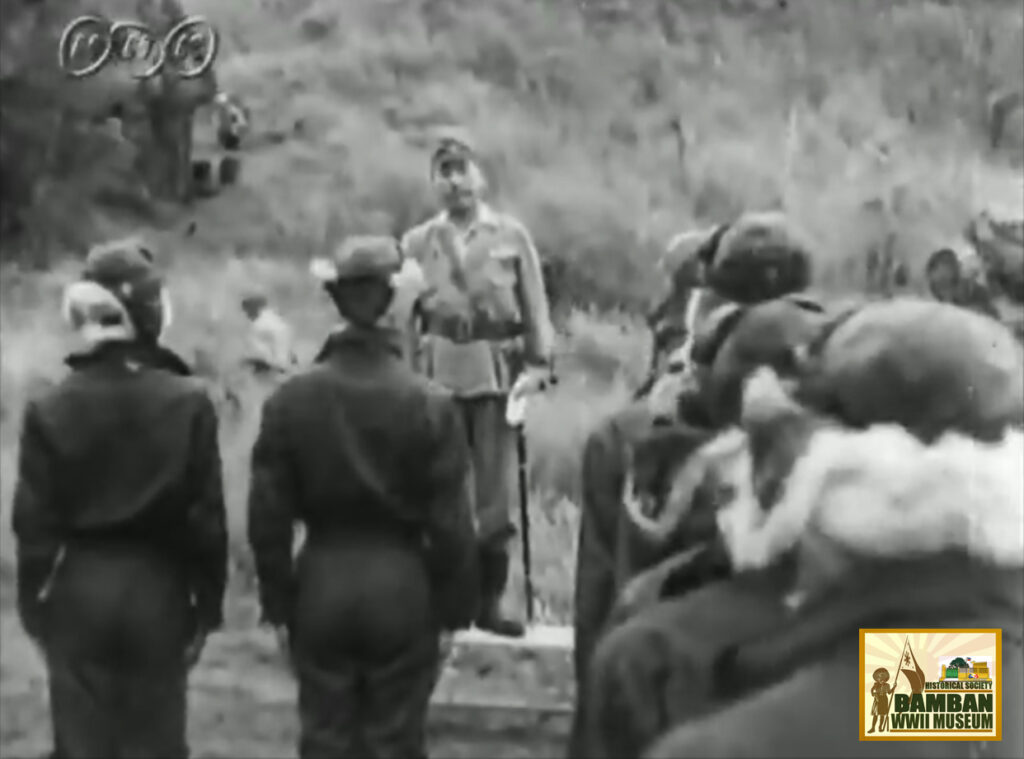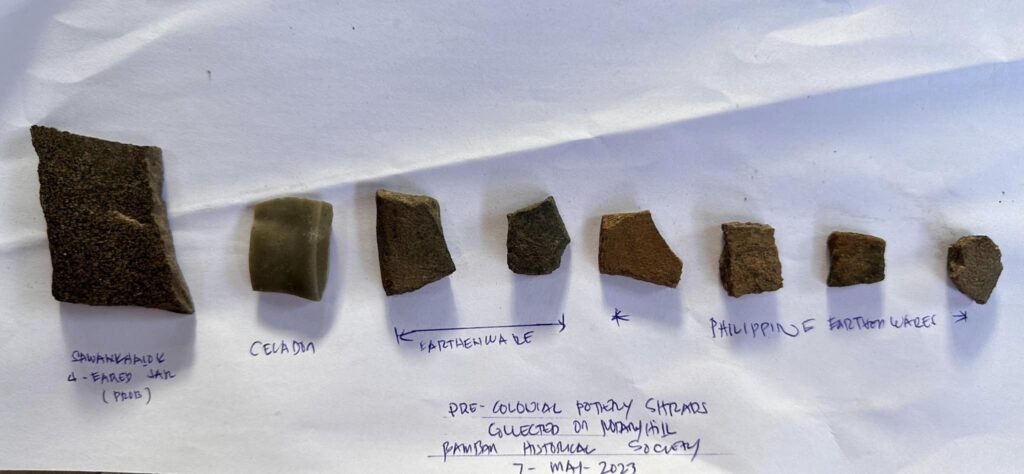
THE LAST DAYS OF THE KAMIKAZE SPECIAL ATTACK AT CLARK AREA, JANUARY 1945.
クラーク飛行場地区における日本の特攻隊の最後の日。
On January 8-10, 1945, on the eve of the escape of Vice-Admiral Onishi Takijiro (1st Air Fleet, Imperial Japanese Navy) from the Bamban Naval Headquarters tunnel, the remnants of the 1st and 2nd Air Fleet pilots, some of them belonging to Kamikaze Special Attack, had been summoned for a very important task ahead.

ADDITIONAL INFO: Most probably taken at the Mabalacat West Airfield in December 1944.
It was the last days of the Japanese Kamikaze on both the Army and Navy. The last Navy Special Attack took off from Mabalacat Airfields on January 6, 1945. And the Japanese Army had the 30th Fighter Group Kamikaze Seika Tai units spread on the airfield of Bamban, Mabalacat and Clark. General Douglas MacArthur already landed in Lingayen with his Sixth Army on January 9 and that American divisions were poised to strike down along the main roads to Manila, including Clark area and the Bamban.

マバラカット西飛行場で行われた金剛隊特別攻撃隊命名式を映したNHK(日本)ドキュメンタリーのスクリーンショット。
VICE-ADMIRAL ONISHI ESCAPE FROM BAMBAN TUNNEL HEADQUARTERS
1945年1月、大西滝次郎中将がバンバン海軍本部から逃亡。
It was just a matter of time and that American infantry will be knocking on the doors of the Bamban. Vice-Admiral Onishi was ordered to leave the Bamban naval HQ tunnel by January 11, and that the remaining Japanese navy pilots from the various 1st and 2nd Air Fleet aur groups would have to escape to Echague to the north, and from there, to be flown out of the Philippines for Formosa (Taiwan), where the 1st Air Fleet will be reorganized and the 2nd Air Fleet had been disbanded already.

THE SURVIVING JAPANESE NAVY PILOTS AT THE TUNNEL HEADQUARTERS
About 300 remaining pilots from both air fleets were gathered at the Bamban Naval Headquarters. Some of them like the pilots from the Kongo Tai Special Attack were still wearing their winter pilot uniform, since most of them came from Japanese air fields in Korea. Vice-Admiral Onishi, along with the Japanese navy pilots, were gathered at the open space of the headquarters in front of the tunnels and were given the final briefing. In that short period of 3 days, many of these surviving pilots stayed inside the headquarters tunnel, and were given briefings by the admiral.


TREK TO ECHAGUE – ルソン島北部のエチャグへ行進します。
By January 9, the journey had begun for their trek to Echague. There were only few numbers of trucks made available and most of them just walk, relying on the help of Japanese army soldiers posted aling the road, as Filipino guerrillas were active already by that time in ambushing Japanese troops. It took them 20 days until the navy pilots reached the airfield of Echague. Most of them were repatriated to Taiwan by air.

GHOST OF THE JAPANESE NAVY PILOT AT THE TUNNEL – トンネル内の日本海軍パイロットの幽霊。
This morning, our Bamban WWII Museum had a big delegation for our WWII Battlefield Tours and one of our itineraries was the Bamban Japanese Naval HQ tunnel. We had our WWII impression on pilots both American and Japanese. With our Japanese navy pilot inside the naval HQ tunnel, history comes alive.
The narratives on the assembly and final briefings of the Japanese navy pilots at the headquarters facility in January 1945 by Vice-Admiral Onishi put us into perspective of the events that happened here 79 years ago.

I took several photographs of the scenes of the Japanese naval pilot, as if a ghost from the past had visited this place.
RHONIE C. DELA CRUZ ロニー・デラ・クルーズ
President, Bamban Historical Society
Director, Bamban WWII Museum
Center for Japanese Pacific War Studies
PGT Tarlac Tourism Office
Citation/Reference:
Chikanori, Moji. At The Edge of the Sky and the Seas: Memoirs of the First Air Fleet Adjutant.


